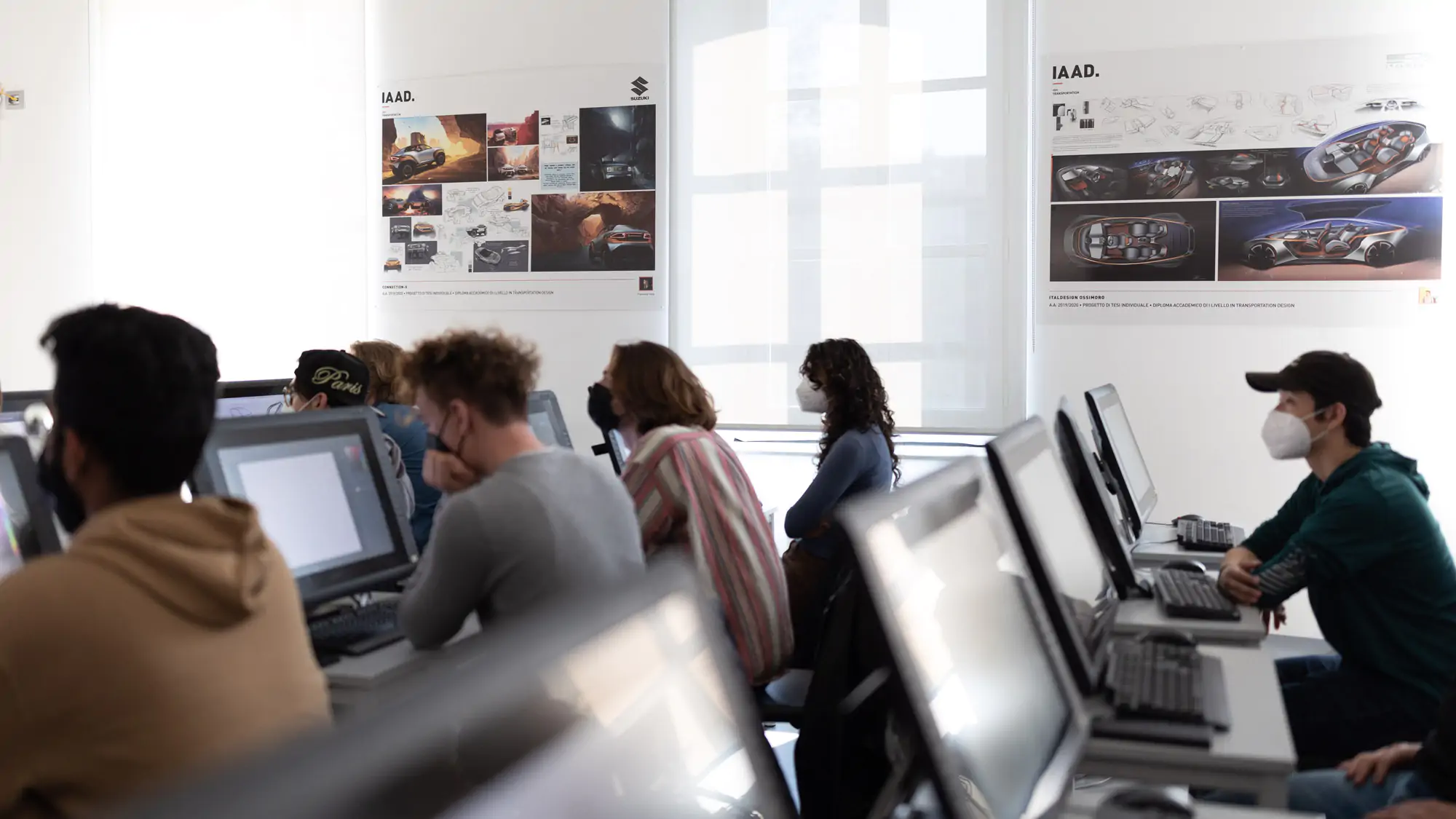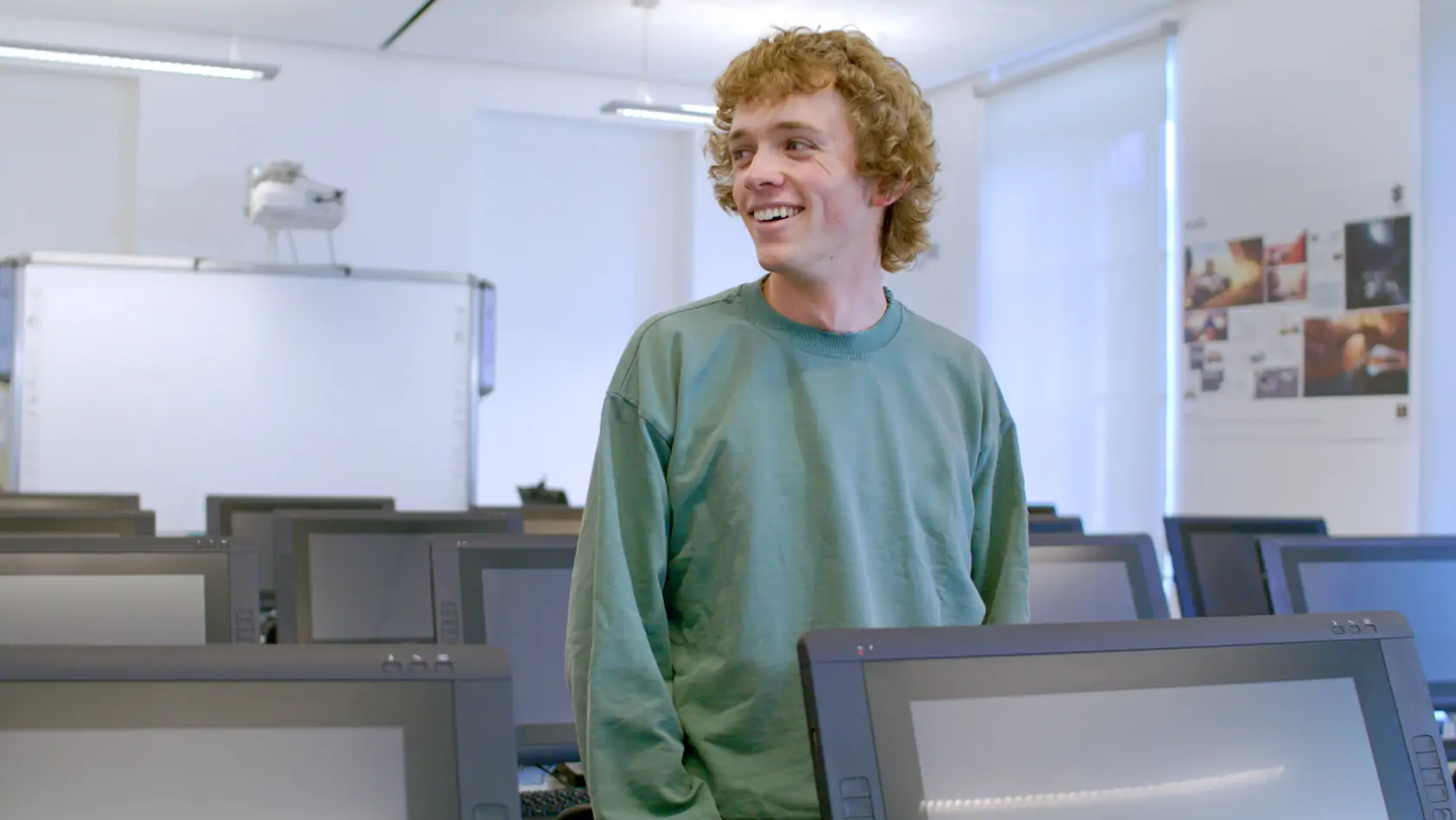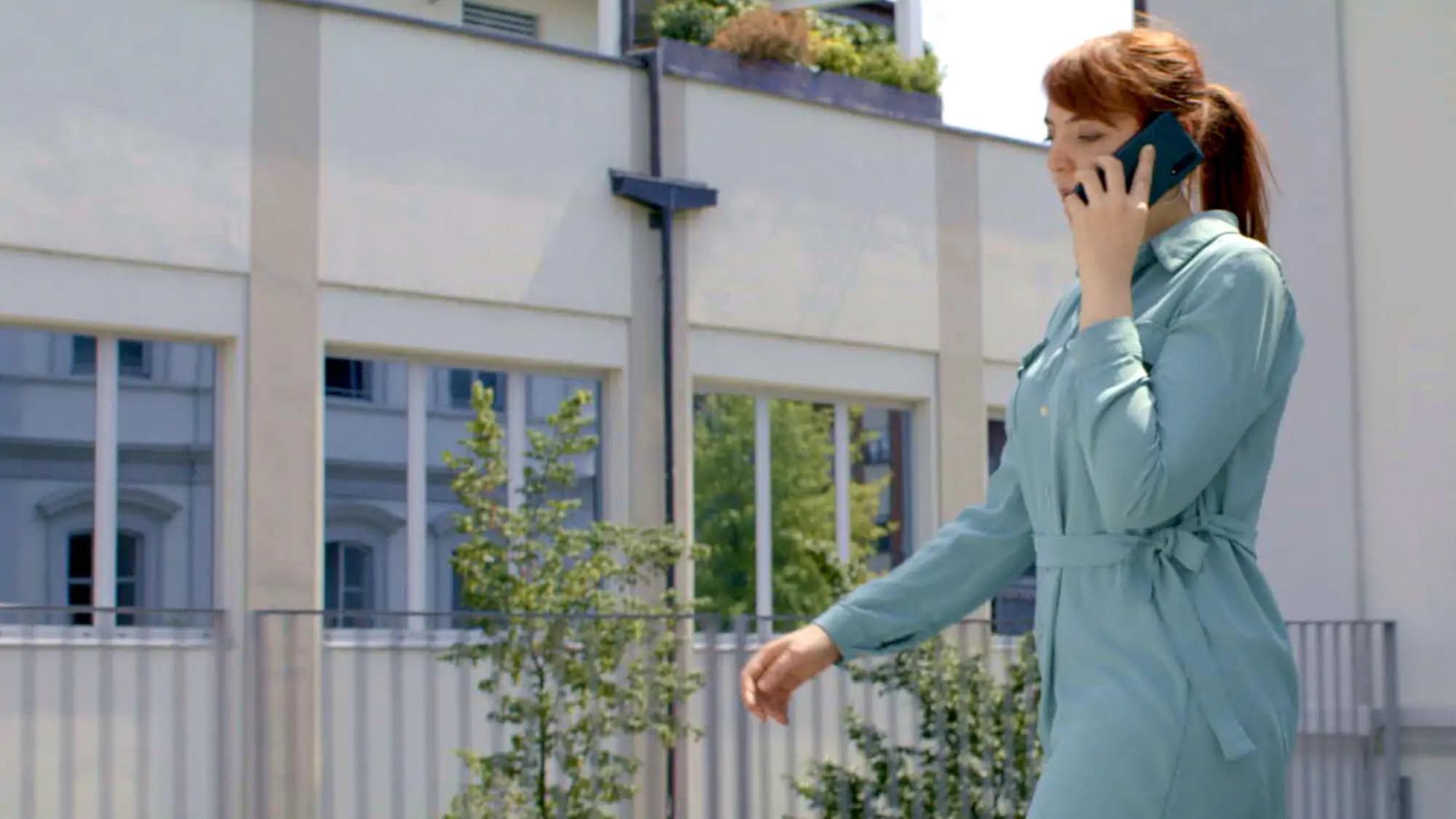Luca Borgogno
Faculty: Strategic Director of the Transportation Design Department at IAAD. Turin

Campus:
Start date:
Duration:

Traditional visions of design must be revised to integrate new social trends and technical approaches such as sustainability, car sharing, alternative propulsion systems, and autonomous driving. The Master in Transportation Design – Automotive & Interaction Design will offer a broad overview of the latest technical achievements, design trends and environmental concerns so that students can fully understand and apply this knowledge in their professional approach.

Traditional visions of design must be revised to integrate new social trends and technical approaches such as sustainability, car sharing, alternative propulsion systems, and autonomous driving. The Master in Transportation Design – Automotive & Interaction Design will offer a broad overview of the latest technical achievements, design trends and environmental concerns so that students can fully understand and apply this knowledge in their professional approach.
PRELIMINARY MODULE
Start date: November
Duration: 6 months
Language: English
Format: full time in person or remotely at IAAD. Torino
Campus: Turin
MASTER MODULE
Start date: May
Duration: 10 months
Language: English
Format: full time in person at IAAD. Turin
Campus: Turin
FACULTY
Strategic Director: Luca Borgogno
Coordinator: Dario Olivero
Course Overview
IAAD.’s objective has always been to provide an innovative approach to education. The best path to becoming a Transportation Design professional is to learn from experts in the field. This insight has led IAAD. to become the first Italian university specializing in transportation design.
The design projects done in collaboration between IAAD. and partner companies allows students to put into practice what they study in an environment very similar to what they will encounter in their professional field.
The Master programme’s goal is to provide students with not only comprehensive preparation, but also the ability to develop a vision of the automotive industry’s future.
Students will refine and perfect their modeling and representation techniques in applying them to different areas of design.
They will be challenged to develop their sensitivity to the language of forms, analyze past and contemporary design trends, and research innovative materials and production processes to develop their own design thinking.
There will be particular attention given to interaction design, preparing students to fully understand and use the latest available technology to create and design a logical and effective interaction between the user and the product, to achieve efficient communication. They will research innovative materials and manufacturing processes to develop their design thinking.
Graduates of the Master’s in Transportation Design will be able to contribute creatively to the design society, find solutions to transportation and mobility challenges, and experiment with multiple approaches and techniques to achieve optimal solutions.
Studying with professional designers and participating in projects with partner companies will stimulate students’ creativity and give them insight into the professional environment and experience of the design process.
Why study Transportation Design – Automotive & Interaction Design at IAAD. Turin?
Turin is the undisputed world capital of automotive design and a center of excellence in the international automotive industry. It encompasses the production of the great Italian brands Fiat, Lancia, Alfa Romeo and Ferrari, the design of Giugiaro, Pininfarina, Bertone, the automotive innovation of the Fiat Research Center, the robotic technologies of DEA, Comau and Rambaudi and the innovation of Oxygen (alternative electric mobility), not to mention a huge satellite business that serves not only Fiat, but almost all the major automotive manufacturers in Europe and the world.
The fact that international design companies choose Turin for their European headquarters demonstrates its importance as a center of design.
Because of this, the IAAD. Department of Transportation Design has access to a wealth of important partner companies, both public and private, that contribute in the launching of research projects, special lectures, workshops and seminars, company visits, teaching activities and internships.
The IAAD. Department of “Bodywork Architecture” was the first of its kind in Italy when it opened in Turin in 1978. In 2008 it was named in memory of Andrea Pininfarina.
Preliminary Course in Transportation Design
The Preliminary Course will offer instruction in the fundamentals of Transportation Design in terms of historical culture, representational techniques (Design sketching, illustration, digital sketching), 3D modeling and design methodology, as well as specific courses in interior design, exterior design, and motorcycle design. It is intended for students who have previously taken design courses not specific to automotive design.
Each discipline includes an end-of-course exam. The Preliminary concludes with the presentation of a final exterior/interior project.
Master in Transportation Design – Automotive & Interaction Design
The educational content of the Master’s programme includes three macro-areas:
Vehicle Design – Exterior Design: the focus of this area is the study of the style, volume and proportions of the exterior of a motor vehicle. Students will be involved in the different stages of design concept of the product’s exterior features: brainstorming, identification and development of concepts through sketches and renderings, up to the final presentation of the project.
Vehicle Design – Interior Design: students will learn the skills neeeded to design multiple types of interiors of a motor vehicle starting from a brief and respecting the stylistic constraints of the chosen brand. Particular attention will be given to the choice of materials.
Product Interaction Design or Interaction Design:
In this area of study, students will develop design skills through in-depth study of evolving social, technological and communication trends, considering as a necessary premise that of integrating the latest available technology for the purpose of interacting with our environment. To achieve faster and more effective communication between users and products, users must create a dialogue between themselves and the product, system or service itself. This dialogue is both physical and emotional in nature and manifests itself in the interaction between form, function and technology. Therefore, it is necessary to prepare students to fully understand and use the latest available technology to create and design a logical and effective interaction between the user and the product to achieve efficient communication. By learning how to manage and design these platforms, students will be prepared to apply these methods in the world of professional design.
The Master’s programme will provide a comprehensive and broad overview, tracing the technological evolution of the car design industry, contemporary mobility trends and their impact in terms of sustainability, to help students fully understand and apply this knowledge in their professional approach. Studying with professional designers and participating in projects with partner companies will stimulate students’ creativity and give them real-life experience and knowledge of the design process, a useful foundation to prepare them for their professional careers.
Graduates of the Master’s in Transportation Design will be able to contribute creatively to the car design industry, find solutions to transportation and mobility challenges, and experiment with multiple approaches and techniques to achieve optimal solutions.
| PRELIMINARY MODULE | MASTER MODULE |
|---|---|
| History of vehicle design | Marketing |
| Design Sketching – Digital Sketching | Exterior Design |
| Illustration | Interior Design |
| Car architecture and aerodynamics | 3D Digital Modeling |
| 3D Modeling | Presentation techniques |
| Transportation Design – Car Interiors & Exteriors | Portfolio |
| CMF (Color, Materials, Finish) | UX/UI Design for Transportation & Mobility – UXTRD |
| PRELIMINARY MODULE |
|---|
| History of vehicle design |
| Design Sketching – Digital Sketching |
| Illustration |
| Car architecture and aerodynamics |
| 3D Modeling |
| Transportation Design – Car Interiors & Exteriors |
| CMF (Color, Materials, Finish) |
| MASTER MODULE |
|---|
| Marketing |
| Exterior Design |
| Interior Design |
| 3D Digital Modeling |
| Presentation techniques |
| Portfolio |
| UX/UI Design for Transportation & Mobility – UXTRD |
ADMISSION REQUIREMENTS AND PROCEDURES
Preliminary Module
The Preliminary Course in Transportation Design is open to students who are have completed bachelor’s degree programmes in Industrial Design, Automotive Engineering and related subjects; to those who have a post-graduate degree in Industrial and/or Automotive Design, and to candidates who have significant professional experience in the transportation sector.
Admission is subject to evaluation of the application, which must include a cover letter, curriculum vitae and portfolio. IAAD. reserves the right to request that applicants be interviewed in person or remotely, if necessary.
Master Module
Admission to the Master in Transportation Design – Automotive & Interacion Design is subject to passing the Preliminary Course in Transportation Design and possessing English language certification at the B2 level or higher.
Students may customize their curricula through participation in competitions, seminars or workshops in order to collect additional credits required for passing the Preliminary Course.
Students with an undergraduate degree in Transportation Design or those with significant experience in transportation or modeling may apply for direct admission to the Master’s in in Automotive & Interaction Design.
In all cases, admission to the course is subject to approval by the Course Coordinator, based on the evaluation of academic qualifications, professional experience and the portfolio.
APPLICATIONS
Applications for the Master’s programme must include the following documents:
The Master’s Coordinator will evaluate the received applications.
IAAD. reserves the right to ask the applicant for an additional interview at IAAD.’s offices or remotely, if deemed necessary. The results of the applicant’s request for admission will be communicated by the office of Orientation.
COURSE DELIVERY, ATTENDANCE AND PARTICIPATION
Classes are held Monday through Friday (extra classes may occasionally be scheduled on Saturdays as well), full-time (including lectures, labs, and individual study), with mandatory attendance.
Upon enrollment, students can choose whether to attend the Preliminary Course in person at IAAD. Turin or remotely online.
The Master’s in Automotive & Interaction Design is held in person at IAAD. Turin. Individual courses or activities in remote mode may be scheduled.
The course requires the development of a thesis project in collaboration with a partner company. The design phase kicks off with an initial briefing with the company, followed by an intermediate presentation and review meetings with the partner company’s designated designer(s), who are involved until the final thesis discussion. Previous thesis projects of the Master’s programme were developed in collaboration with the Fiat Research Center, Lancia Style Center, Italdesign Giugiaro – Volkswagen Group, Porsche, Pininfarina, Changan, MG, Peugeout, Hitachi Rail and Suzuki.
In order to offer its students the best opportunities on the market for creative professionals, IAAD. manages contacts between its students and the professional world, introducing its graduates to the top businesses in their fields. IAAD. has fostered relationships with companies that has resulted in a regularly updated database of businesses that continuously contact the Institute to find young, talented professionals to fill open positions.
Car Designer
This professional oversees the design of the exterior or interior of a car or other type of vehicle, in line with the latest visual trends and technological developments. The car designer has the skills to communicate ideas through sketches and renderings to support proposed concepts, working as part of a team at a company’s style center or as a freelance designer.
Interaction Designer
An interaction designer creates the process and methods of user-product interaction in order to enable the user to achieve his or her goals in the best possible way. This professional uses the latest technological developments available to create seamless communication between the user and the product, usually working together with a company’s interior design department or as an independent freelance designer.
3D Modeller and Visual Designer
This professional works in parallel with the exterior/interior designer to create and refine their 2D ideas into 3D models. He or she is responsible for 3D development, using specialized software to optimize and visualize the vehicle in VR and AR and prepare it for production.
Color & Trim Designer
This designer is an expert in creating the desired atmosphere inside the car according to the latest visual trends, utilizing an extensive knowledge of colors, textures and applicable materials to create a sustainable, safe, visually and ergonomically optimized interior environment for the vehicle.
IAAD. offers financial support to students with scholarships to partially cover the cost of attending the Preliminary and Master’s programmes.
nb: The number of scholarships available is always fewer than the application. It is important to keep in mind that most scholarships are awarded based on the committee’s evaluation of a number of principal requirements, including:
The Evaluating Committee will award, at its sole discretion, the available scholarships to the Preliminary Course candidates deemed most deserving. Recipients will receive official notification about the awarding of scholarships before the start of the course.
For the scholarship to be maintained for the Master’s degree, recipients must have passed the Preliminary Course with a grade point average of 27/30 or higher.
Additional scholarships may be awarded to candidates who directly enroll in the Master’s programme.


Other Master’s Courses


